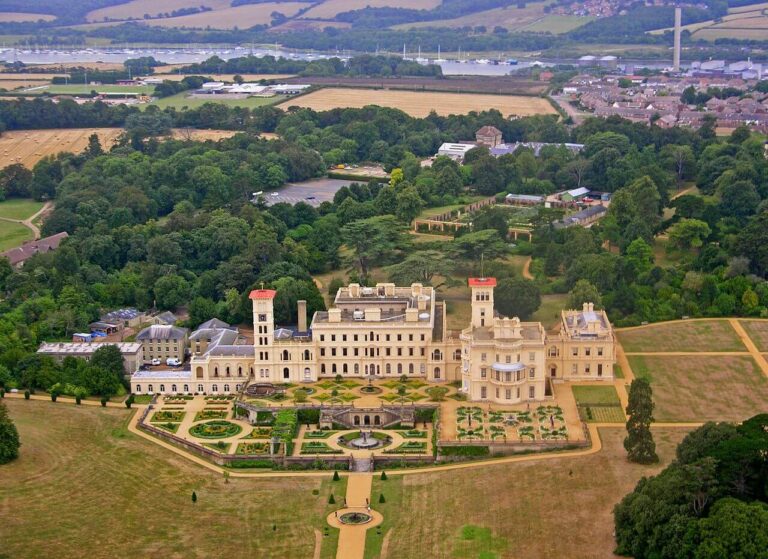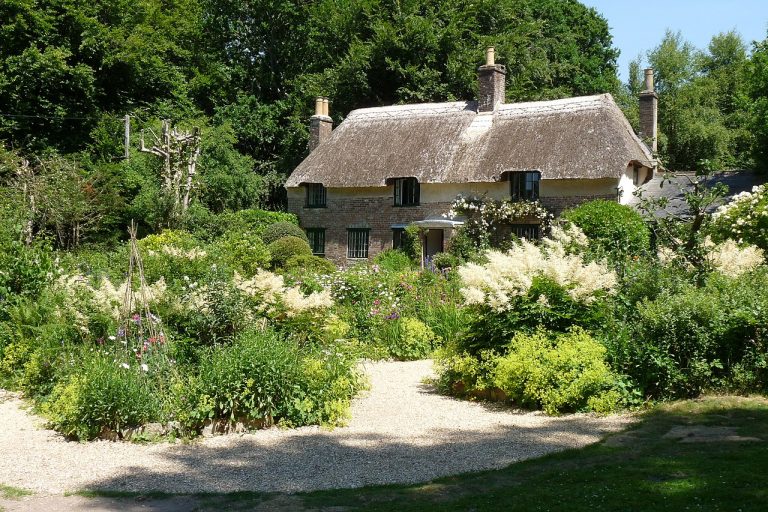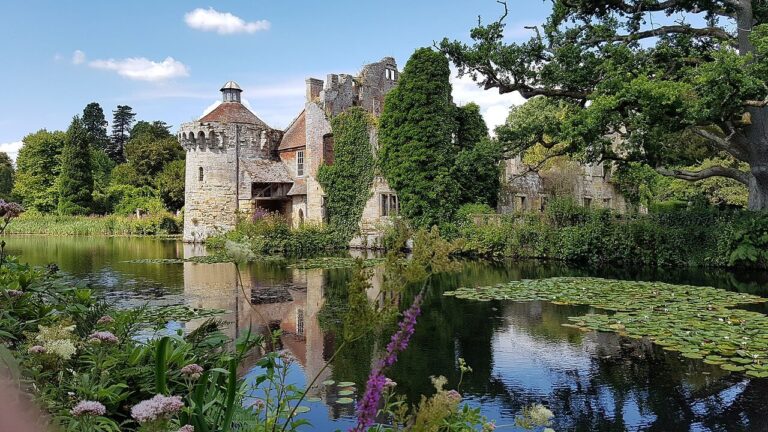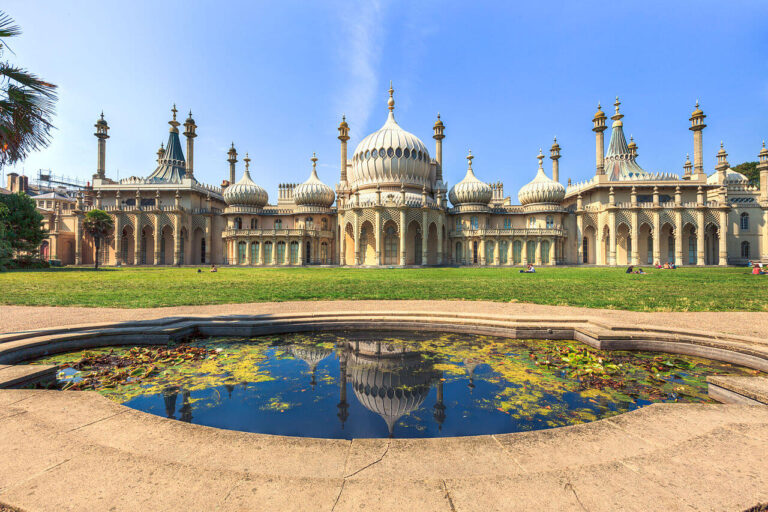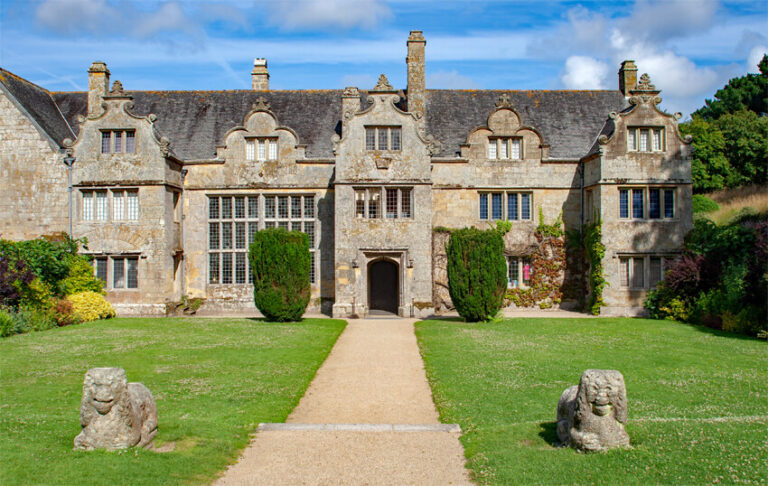The Best Castles and Stately Homes in Derbyshire
Derbyshire is a county in the East Midlands of England. In Derbyshire you can find much of the Peak District National Park, the southern part of the Pennine range of hills, and pat of the National Forest.
Derbyshire is also home of beautiful castles, stately homes, and historic houses. These historic houses include grand manors built by the aristocratic Cavendish family, one of the first Renaissance manors in England built by the richest woman (after the Queen) in 16th century England, and a show palace.
These are the best castles stately homes, and historic houses in Derbyshire.
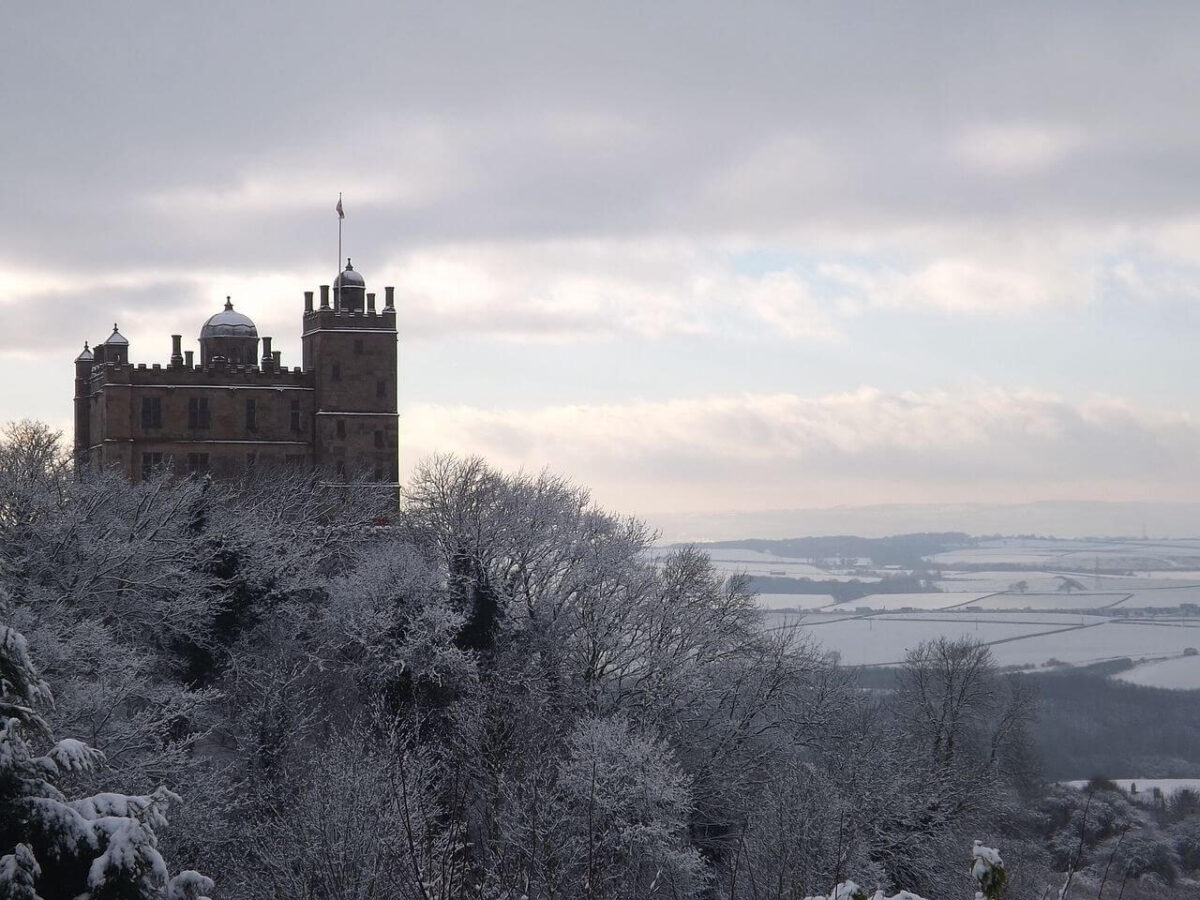
Bolsover Castle
Bolsover Castle is an early 17th century castle built by Sir Charles Cavendish. The castle was built on the ruins of an earlier 12th century castle. The original castle was built by the Peverel family, and eventually, the castle ruins were sold to Sir Charles Cavendish in 1590.
The new castle was not meant to be a defensive structure. Instead, it was built as a hilltop pleasure palace for the Cavendish family. The castle was extended multiple times over the years and later it became the seat of the Earls and Dukes of Portland.
A visit will take you back to the age of aristocratic extravagance with lavishly decorated rooms, a riding school, and recreated gardens. From the castle you also have a great view of the Derbyshire Countryside. Bolsover Castle is a great day out for the entire family.
Where: Bolsover
Built: 17th century
Visitor information: the castle is open to visitors. Visit the website for more information.
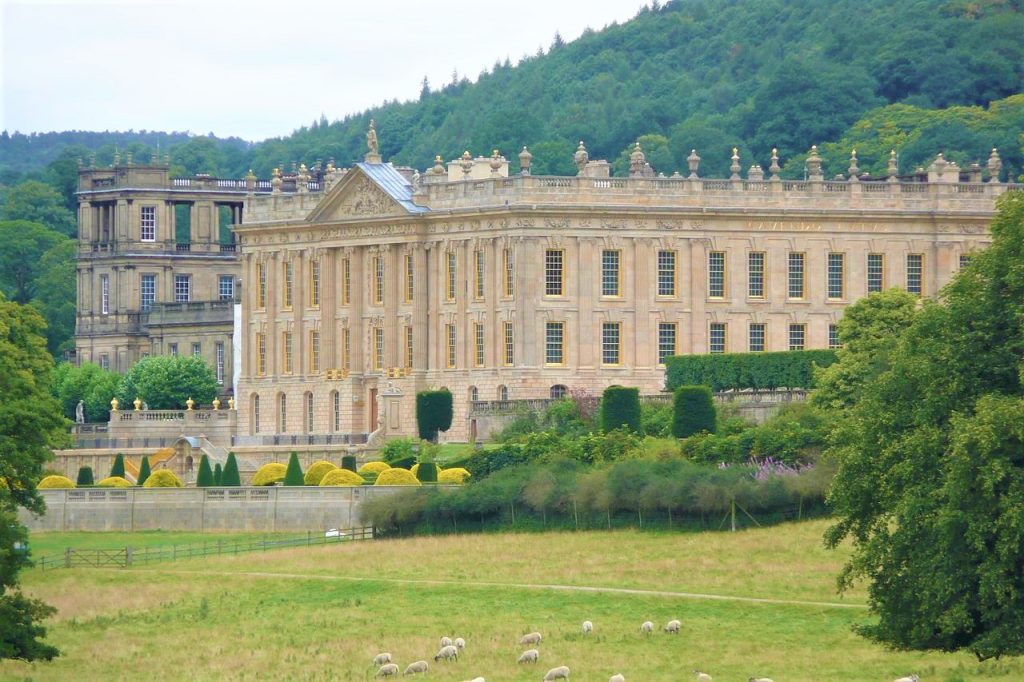
Chatsworth House
Chatsworth House is the first Baroque house to be built in England. It is the seat of the Dukes of Devonshire, a prominent English aristocratic family, who have owned Chatsworth for almost 500 years.
The South and East fronts of Chatsworth were designed by William Talman in English Baroque style. The First Duke of Devonshire also created the Baroque State Apartments. They were designed for a visit from King William III and Queen Mary II. The royal couple never visited Chatsworth but the state rooms have been preserved.
Chatsworth House features a large collection of furniture, neoclassical sculptures, and books. And the art collection is something special. The items in the collection span 4,000 years from ancient Rome and Egypt to Old Masters like Rembrandt to modern artists like Lucian Freud.
Chatsworth House has often been featured in movies and television series like Pride and Prejudice, Peaky Blinders, and The Duchess. The Duchess is a movie about Georgiana, Duchess of Devonshire who used to live at Chatsworth.
Where: Bakewell
Built: 17th century
Style: Baroque
Visitor information: the house and gardens are open to visitors. Visit the website for more information.

Hardwick Hall
Hardwick Hall is a leading example of an Elizabethan prodigy house. The house was built in the late 16th century for Bess of Hardwick, the richest woman in Great Britain after the Queen. The house was designed by Robert Smythson and is one of the earliest examples of Renaissance style in England.
The house was meant to show Bess’ wealth and it’s a revolutionary architectural building. The house has many (and large) windows, a clear sign of wealth in those days. The house is symmetrical which was new in a residential building, the Great Hall was built on an axis through the center of the home, and the ceiling height of the floors increases the higher you go.
The Hall was owned by the Devonshire family for centuries until it was transferred to the National Trust in 1959. The house has a large collection of 16th century textiles (including works by Bess of Hardwick) and a large collection of fine tapestry and furniture from the 16th and 17th centuries.
Where: Ault Hucknall
Built: 1590–1597
Style: Renaissance
Visitor information: the house is open to the public. Visit the website for more information.

Calke Abbey
Calke Abbey is a Baroque country house in Derbyshire. The house has never been an abbey, but the site on which the house stands used to be the home of an Augustinian priory from the 12th century until the dissolution of the monasteries by King Henry VIII.
The estate was bought by the Harpur family in 1622. Sir John Harpur built the new house between 1701 and 1704. In 1981, due to rippling death duties, they sold the estate to the National Trust. The house is deliberately displayed as a grand country house in decline.
Surrounding the house lies a landscape park with a walled garden, a flower garden, and a kitchen garden. The estate also includes an ancient deer park that is a Site of Special Scientific Interest and a national nature reserve.
Where: Ticknall
Built: 1701
Style: Baroque and Neoclassical
Visitor information: the house and gardens are open to visitors. Visit the website for more information.
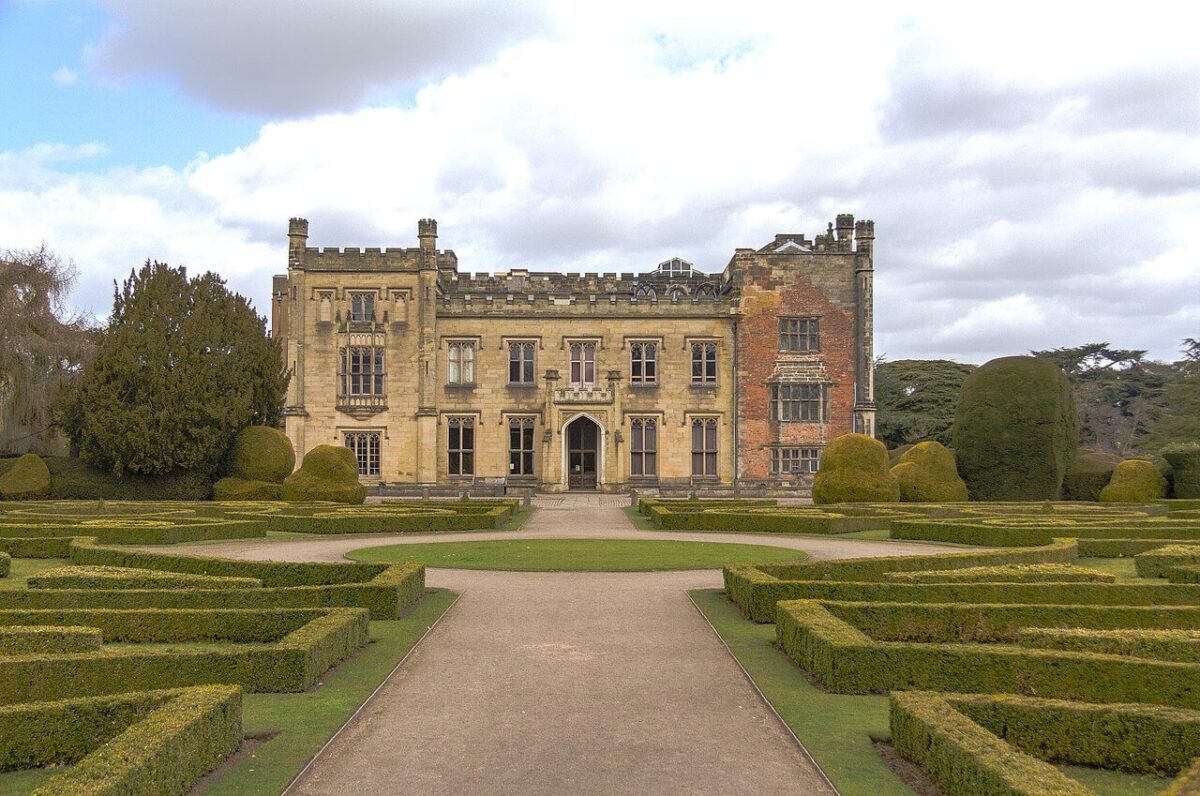
Elvaston Castle
Elvaston Castle is a Gothic Revival castle and stately home in Derbyshire. The original Elizabethan-style house was built in 1633 for Sir John Stanhope. In the early 19th century, the manor was transformed into a Gothic Revival mansion by James Wyatt. He designed a new wing, Great Hall, and most of the interiors. Since the Second World War, the manor house has been in decline.
The Fourth Earl of Harrington commissioned landscape gardener William Barron to create a private and secluded oasis of great beauty. Barron would spend 20 years creating these gardens.
Where: Elvaston
Built: 1815–1829 (extension and remodel)
Style: Gothic Revival
Visitor information: the castle is not open to the public. The Elvaston Castle Country Park with 321 acres of open parkland, woodland, and formal historical gardens is open to visitors. Visit the website for more information.
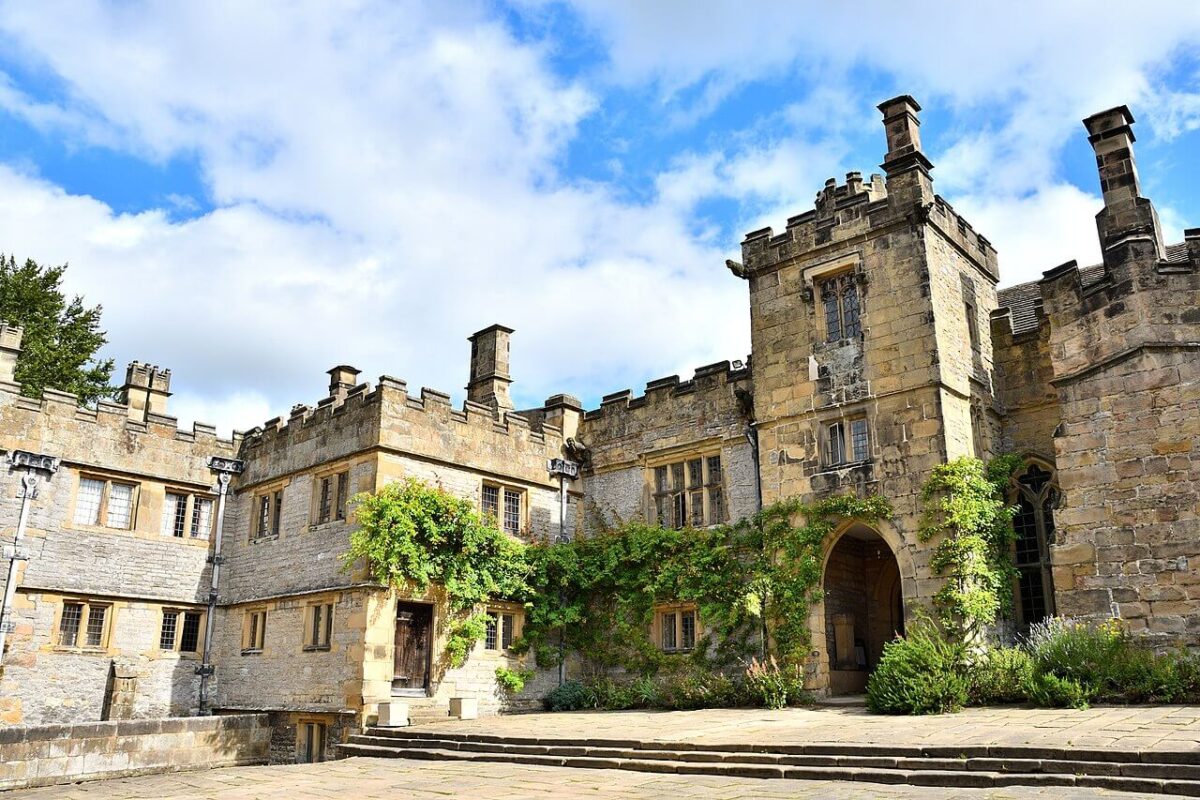
Haddon Hall
Haddon Hall is a medieval country house in Derbyshire. The house is the former seat of the Dukes of Rutland, and currently it is the home of Lord Edward Manners (brother of the current Duke). Haddon Hall is one of the finest medieval manor houses in England and showcases a beautiful tapestry collection and early English furniture.
Surrounding the house lie Elizabethan Walled Gardens that were recently redesigned by Arne Maynard.
Haddon Hall has often been featured in literature, art, and movie & television adaptations.
Where: Bakewell
Built: 11th century with additions made between the 13th and the 17th centuries
Style: Tudor
Visitor information: the house and gardens are open to visitors. Visit the website for more information.
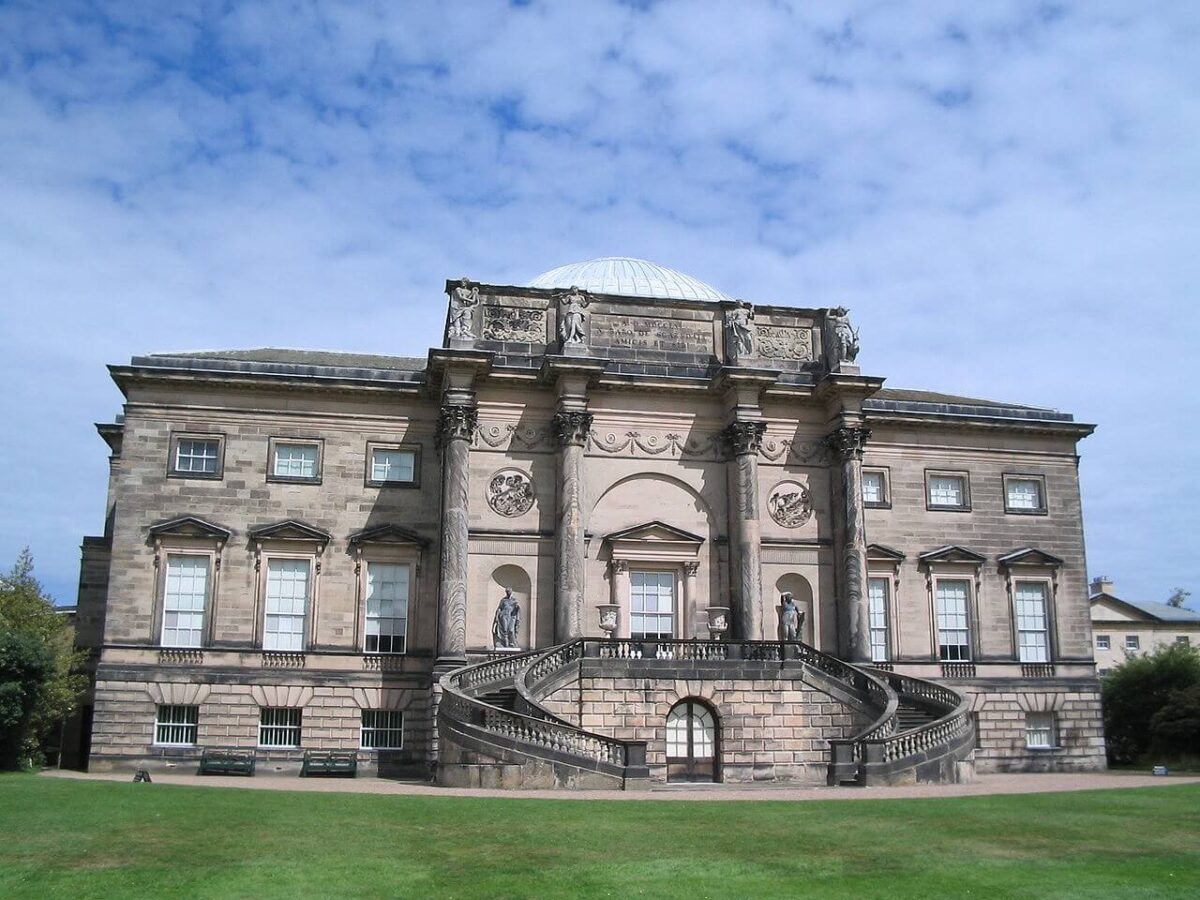
Kedleston Hall
Kedleston Hall is an 18th century Neoclassical manor house in Derbyshire. The house was built by Nathaniel Curzon after a design by Robert Adam. The house is located on the site of a medieval village that was moved by Nathaniel Curzon to make way for the new manor.
The house was built to rival Chatsworth and was meant to be a “temple of the arts”. It was not meant as a family home but instead as a show palace to showcase paintings, sculptures, and furniture. The State Floor shows the opulent 18th century interiors.
The museum at Kedleston Hall shows a collection of 1,000 objects from across Asia that were acquired by George Nathaniel Curzon, 1st Marquess of Kedleston.
Where: Kedleston
Built: 1759
Style: Palladian and Neoclassical
Visitor information: the house is open to visitors. Visit the website for more information.
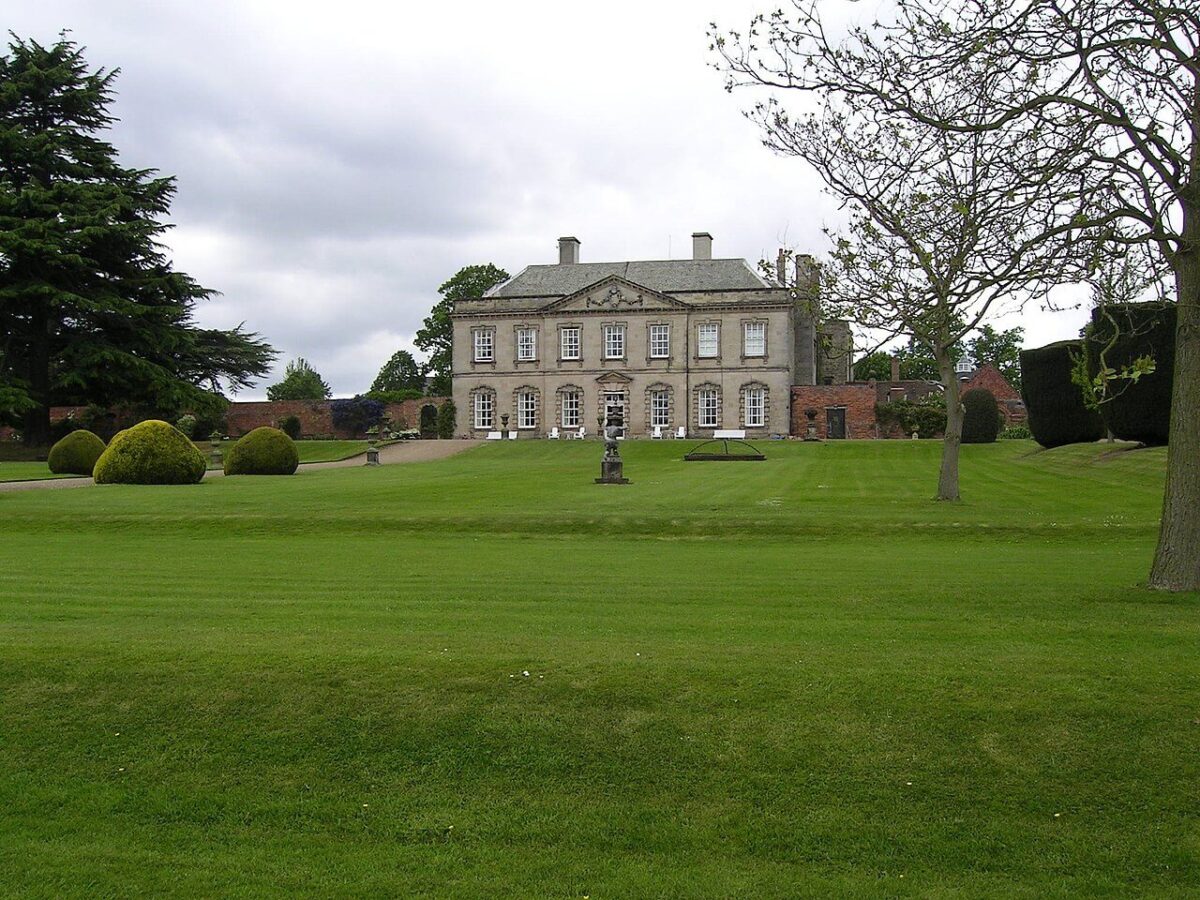
Melbourne Hall
Melbourne Hall is a 17th century Georgian manor house is Derbyshire. The manor house was previously owned by William Lamb, 2nd Viscount Melbourne and Prime Minister of Great Britain from 1835 to 1841. It is currently the home of Lord and lady Ralph Kerr.
The gardens were laid out by Thomas Coke, a gentleman architect who inherited the house in 1692. Together with Henry Wise, he designed the formal gardens with avenues, a parterre, a yew walk, fountains, and sculptures.
Where: Melbourne
Built: 17th century
Visitor information: the house and garden are open to visitors. Visit the website for more information.

Renishaw Hall
Renishaw Hall is a 17th century manor house that has been the home of the Sitwell home for 400 years. Alterations were made in later centuries, including by Sir Edwin Luytens in 1908.
Surrounding the house lies an award-winning Italianate garden which was laid out by Sir George Sitwell.
Where: Eckington
Built: 17th century
Visitor information: the house and garden are open to visitors. Visit the website for more information.
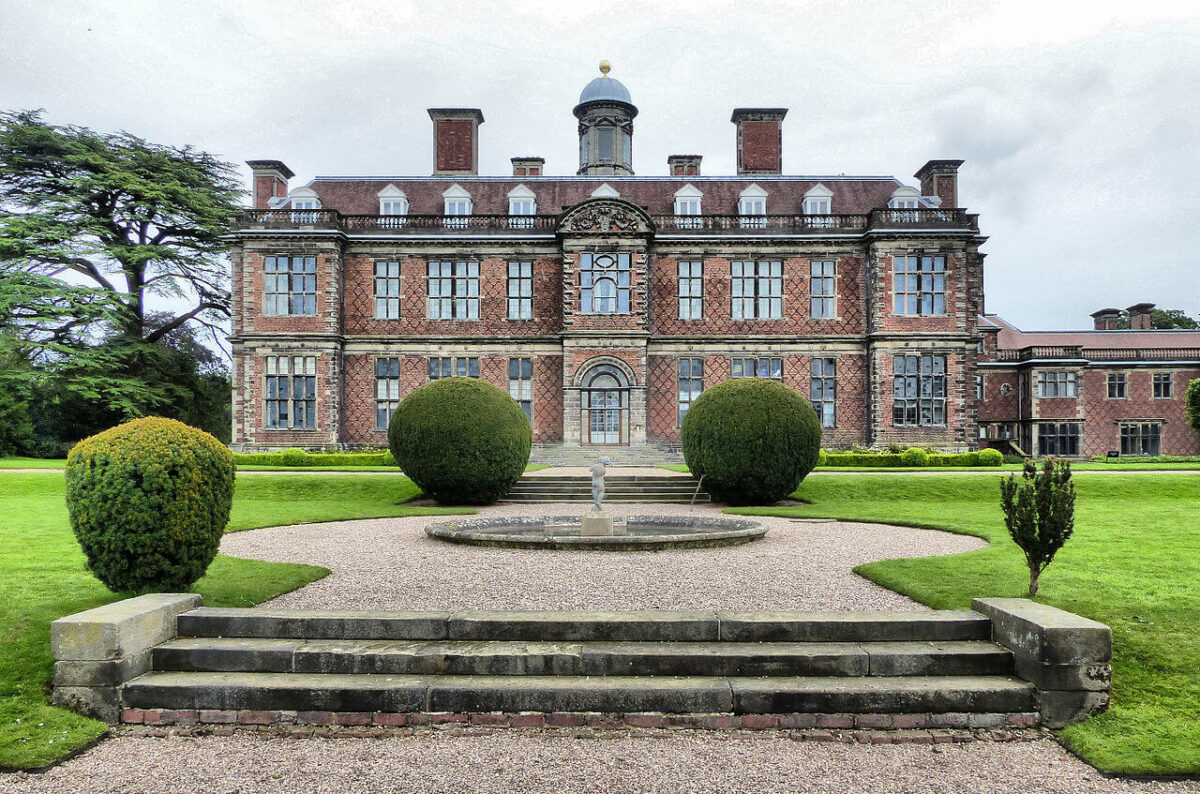
Sudbury Hall
Sudbury Hall is a 17th century manor house built by George Vernon. The house is known for its grand Great Staircase, Long Gallery, portraits by John Michael Wright, carvings by Grinling Gibbons and Edward Pierce, and murals by Louis Laguerre.
The Hall currently houses the National Trust Museum of Childhood. Visit the website for more information.

Sutton Scarsdale Hall
Sutton Scarsdale Hall is a Georgian mansion that was built between 1724 and 1729. After many years of neglect, the house was stripped in 1919. Parts of the house even made it to America when newspaper baron William Randolph Hearst bought oak paneling from the hall.
Despite the home being a shell, you can still see traces of plasterwork and from the hall you have a beautiful view of the surrounding landscape. Visit the English Heritage website for more information.
